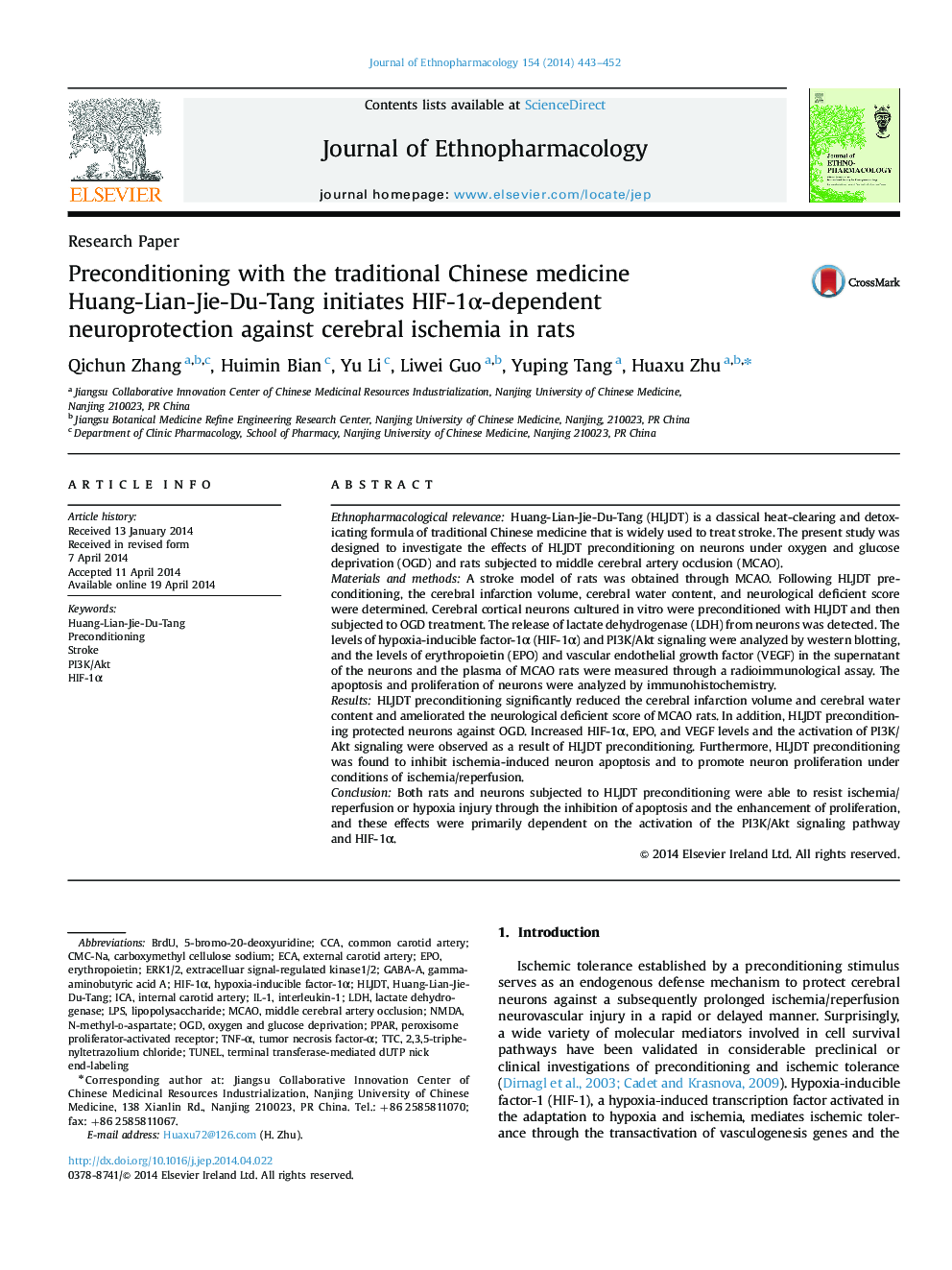| Article ID | Journal | Published Year | Pages | File Type |
|---|---|---|---|---|
| 2545149 | Journal of Ethnopharmacology | 2014 | 10 Pages |
Ethnopharmacological relevanceHuang-Lian-Jie-Du-Tang (HLJDT) is a classical heat-clearing and detoxicating formula of traditional Chinese medicine that is widely used to treat stroke. The present study was designed to investigate the effects of HLJDT preconditioning on neurons under oxygen and glucose deprivation (OGD) and rats subjected to middle cerebral artery occlusion (MCAO).Materials and methodsA stroke model of rats was obtained through MCAO. Following HLJDT preconditioning, the cerebral infarction volume, cerebral water content, and neurological deficient score were determined. Cerebral cortical neurons cultured in vitro were preconditioned with HLJDT and then subjected to OGD treatment. The release of lactate dehydrogenase (LDH) from neurons was detected. The levels of hypoxia-inducible factor-1α (HIF-1α) and PI3K/Akt signaling were analyzed by western blotting, and the levels of erythropoietin (EPO) and vascular endothelial growth factor (VEGF) in the supernatant of the neurons and the plasma of MCAO rats were measured through a radioimmunological assay. The apoptosis and proliferation of neurons were analyzed by immunohistochemistry.ResultsHLJDT preconditioning significantly reduced the cerebral infarction volume and cerebral water content and ameliorated the neurological deficient score of MCAO rats. In addition, HLJDT preconditioning protected neurons against OGD. Increased HIF-1α, EPO, and VEGF levels and the activation of PI3K/Akt signaling were observed as a result of HLJDT preconditioning. Furthermore, HLJDT preconditioning was found to inhibit ischemia-induced neuron apoptosis and to promote neuron proliferation under conditions of ischemia/reperfusion.ConclusionBoth rats and neurons subjected to HLJDT preconditioning were able to resist ischemia/reperfusion or hypoxia injury through the inhibition of apoptosis and the enhancement of proliferation, and these effects were primarily dependent on the activation of the PI3K/Akt signaling pathway and HIF-1α.
Graphical abstractFigure optionsDownload full-size imageDownload high-quality image (181 K)Download as PowerPoint slide
